Find here all the boating resources you need to make an informed decision about which type of boat would be best for you. If you want to use the boat exclusively for fishing, or if you and your family plan to use it for other recreational watersports as well. Learn about different types of boats
Classes of Boats
Boats are identified in classes by length. Federal and state laws require certain equipment aboard boats depending on the class or length of the boat. Learn about different classes of boats and how to measure vessel size.

FISHING BOAT SIZES
Boats are divided into four length classes:
Class A Vessels: These classes of vessels have less than 16 feet in length.
Class I Vessels: These classes of vessels range from 16 feet to no more than 26 feet in length.
Class II Vessels: These classes of vessels range from 26 feet to no more than 40 feet in length.
Class III Vessels:These classes of vessels range from 40 feet to no more than 65 feet in length.
MEASURING VESSEL LENGTH
The length of a fishing vessel is measured from the tip of the bow in a straight line to the stern. This does not include outboard motors, brackets, rudders, bow attachments, wake board towers or swim platforms and ladders that are not a molded part of the hull.
FISHING BOAT CAPACITY
Always check the capacity plate, which is usually found near the operator’s position or on the vessel’s transom. This plate indicates the maximum weight capacity and maximum number of people that the vessel can carry safely.
Always follow the recommended capacity in the owner’s manual and on the manufacturer’s warning decal.
BEST BOATS FOR BEGINNERS
You are thinking of buying a new boat. Congratulations, there is a boat for every budget, and there are dozens of types to choose from. If you’re a beginner, you may want to consider an all-purpose-fishing boat, aluminum fishing boat, bowrider or pontoon boat for ease of use. Watch the following video to see the differences among these options.
Types of Hulls
The most important part of a boat is its hull. When a boat is built, the hull is made first and then everything else is added to it. The shape and type of a boat’s hull determine how the boat handles in different water conditions.

TYPES OF BOAT HULLS
Use the information below to choose the kind of boat that best matches your kind of boating. These are the different types of hulls.
DISPLACEMENT HULLS
This fishing boat is rounded and plows the water out of its way as it moves along. It is designed to cut through the water with very little propulsion.
Advantages:This boat hull provides a stable, smooth ride by plowing through waves.
Disadvantages:Uses more fuel to plow water out of its way, and is slow.
PLANING HULLS
This fishing boat is either flat-bottomed or V-shaped in front and flatter toward the back. It is designed to lift the front part of the boat out of the water as it speeds up, letting the boat skim across the water. These boats may operate like displacement hulls when at rest or at slow speeds, but they climb toward the surface of the water as they move faster. Most small, power-driven boats have planing hulls.
Advantages:This boat hull uses less fuel and goes faster because it rides on top of the water instead of plowing through it.
Disadvantages: Rougher, more unstable ride because it bounces on top of waves.
FLAT-BOTTOM HULL
This fishing boat with a flat planing hull is typically found on smaller, open boats and has a shallow draft, which is good for fishing in small lakes, ponds, and slow-moving rivers.

Examples: row boats and dingy boats.
Advantages:This boat hull is very stable in calm weather. This planing hull has a shallow draft, which is good for fishing in small lakes and rivers.
Disadvantages:This fishing boat broad bow area creates a rough ride. Takes more power to move at the same speed as flat bottom hulls. These boats are usually limited to low horsepower motors. May roll or bank in sharp turns.
MULTI-HULL
This fishing boat with multi-hulls can describe any boat with more than one hull to use for displacement and planing. The air pocket between the hulls can also help the boat get on plane more easily.

Examples: catamarans and pontoon boats.
Advantages:This boat hull has greater stability because of its wide beam, commonly use two hulls for added stability and for easier traveling through the water.
Disadvantages:Propellers on boats with planing hulls often are not fully submerged, so they need to provide holding ability as well as higher pitch and rake, because of higher top-end speeds. Needs a large area when turning.
DEEP-VEE HULL
This fishing boat with Deep-Vee Hull is used on boats operated in wavy water or on boats that go farther offshore. This type of hull is probably the most common hull design. Most manufactures of boats built today use modifications of this design.

Examples: power boats and fiberglass motorboats.
Advantages:This fishing boat is easier to maneuver at slow speeds, the Deep-Vee design offers a good ride in rough water as the pointed bow slices forward and the “V” shaped. This planing hull has a shallow draft, which is good for fishing in small lakes and rivers.
Disadvantages:Takes more power to move at the same speed as flat bottom hulls. May roll or bank in sharp turns.
ROUND-BOTTOM HULL
This fishing boat with round-bottom has mostly a displacement hull and is usually used for dinghies, tenders and some car-top boats. The round-bottom hull type gives a soft ride, but rocks back and forth more than a flat-bottomed boat.

Examples: Canoe and kayak.
Advantages:This hull is rounded to allow the boat to travel through water easily at slower speeds to limit the amount of drag on the boat.
Disadvantages:Smaller boats like sailboats and canoes that have a rounded hull can be very unstable. Has a tendency to roll unless it has a deep keel or stabilizers.
CATHEDRAL HULL
This fishing boat with cathedral-hulls has a distinct modification of the “V” bottom that are called tri-hulls and cathedral hulls.

Examples: modern boats usually power driven.
Advantages:This boat hull style has two or more hulls attached closely together for more stability without extra width. The air pocket between the hulls can also help the boat get on plane more easily.
Disadvantages:It gives a rougher ride in choppy water because of the increased surface at the bow. The side hulls can cause pounding, resulting in a lot of spray.
Types of Boat Engines
Choosing the right type of boat engine for your vessel is very important. Both weight and horsepower will have an impact on the performance of your boat. Learn about different types of boat engines in this section.

BOAT ENGINE SIZES
When choosing the appropriate boat engine for your vessel, consider the size and weight of the boat and remember that weight includes your passengers, fuel and gear. A good rule of thumb is to come as close as possible to the maximum horsepower that your boat is rated for.
BOAT ENGINE POWER
When looking at gasoline engines (outboard, stern drive or inboard), there are three distinct types of fuel delivery systems on the market. Each fuel delivery system is unique, and there are benefits to each system.
DIRECT FUEL INJECTION
①Low emissions
②Excellent fuel economy
③Instant turn-key starting
④Smooth idling
⑤Reduced vapor lock in warmer climates
⑥Automatically adjusts to altitude, air and water temperatures
⑦Superior throttle response and power
⑧Self-diagnosis systems available
⑨Sealed fuel system (helps to eliminate fuel oxidation)
ELECTRONIC FUEL INJECTION (EFI)
①Uniform air and fuel distribution
②Superior throttle response and power
③Usually excellent fuel economy
④Cold engine start
⑤Self-diagnosing systems availability
⑥Low emissions (especially four-stroke)
CARBURETED FUEL SYSTEMS
①Lowest initial cost
②Simple design
③Higher emissions than an EFI or DFI system
④Poor fuel economy when compared to an EFI or DFI system
TYPES OF BOAT ENGINES
A boat engine is one of the most essential components of a vessel. For this reason, it is important to understand the different options available and which boat engine will fit your fishing needs. The two main factors to consider are the weight and horse power of your engine. These are the main types of engines available.
DIESEL INBOARD ENGINES
Diesel engines rely on compression to power the engine. Their design is similar to a traditional gas engine, with crankshafts and cylinders and pistons; however, the fuel systems on a diesel engine are completely different and more complex.
Diesel engines range in size and horsepower. While they’re widely used in other parts of the world, in the United States, they’re typically found in boats larger than 35 feet. The main reason diesel engines are not used in smaller boats is weight. In general, a diesel engine weighs more than a gas engine. However, they are used in larger vessels because of their ability to produce torque.
①No carbon monoxide to worry about in cabins or on the back of boats
②Excellent torque
③Long life expectancy
④Low running costs
⑤Generally run at lower RPM than traditional gas engines
⑥Non-explosive fuel
GAS INBOARD ENGINES
These boat engines are modified for maritime use. Gasoline inboard engines range from 90 horsepower to over 1000 horsepower per engine and are used in a variety of boats, from tow sport boats to large cruisers.
In an inboard engine configuration, the engine sits amidships, with a drive running through the bottom of the boat to a propeller, and a separate rudder used for steering. A transmission is often used to transfer power from the engine to the propeller. Exhaust is passed through the stern of the boat. Inboards are common for tow sports such as waterskiing, wakeboarding as they allow the propeller to be brought forward of the back of the boat, providing area for platforms to assist skiers entering and exiting the boat.
①Simple drive system can lower maintenance
②No means to trim propeller
③Low running costs
④Quiet and out of the way
OUTBOARDS

An outboard is a portable, self-contained unit consisting of an engine, gear case and propeller, which is attached to the transom of a boat.
A growing number of outboard engines have a four-stroke design, but many are still conventional two-stroke engines that burn oil as a lubricant along with the fuel. New technology two-stroke outboards are direct-injection engines and burn more than 75% cleaner than conventional two-stroke outboards.
Steering of boats with outboards is controlled by a tiller or steering wheel that swivels the entire engine to direct propeller thrust. Outboards have more power per pound of weight than inboard engines.
INBOARDS

An inboard is a four-stroke automotive engine adapted for marine use. It is mounted inside the hull or in front of the vehicle.
STERN DRIVES
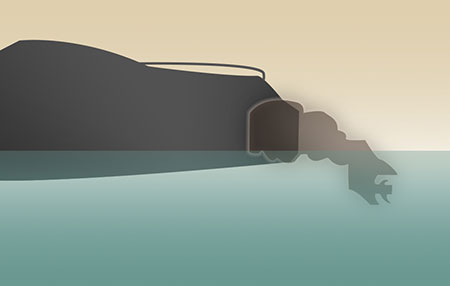
Stern drives are known also as inboard/outboards (I/Os) because they combine features found on both inboard and outboard engines. Stern drive engines are four-stroke automotive engines adapted for marine use and are mounted inside the boat.
A stern drive engine is attached through the transom to a drive unit (also called an outdrive) that is essentially the lower unit of an outboard. The engine turns a driveshaft that is attached to a propeller at the other end.
Steering of stern drive boats is controlled by the outdrive, which swivels like an outboard engine to direct propeller thrust. Stern drives have quieter and more fuel-efficient engines.
JET BOAT ENGINES

Jet propulsion systems have the advantage of having no propeller, which can be dangerous to people in the water and to marine life.
They are usually inboard engines that take in water that flows through a pump powered by an impeller. The water is then discharged at high pressure through a nozzle that propels the boat forward.The nozzle swivels to provide steering for the boat. Most personal watercraft use jet drives.
When power is not being applied, a jet-driven vessel loses its steering because it is the stream of water that steers the boat. Keep hands, feet and hair away from the pump intake and do not operate in shallow water.
Tips for Buying Fishing Boats
Analyze the type of activity you want to pursue. Some boats are made for a specific purpose, like water skiing, while other boats serve multiple purposes. Decide what kinds of things you want to do, then find the boat that’s right for you.

①Think about the people you want to boat with and consider the kind of space you’ll need to enjoy your activities and remain safe and comfortable.
②Where do you want to spend your time boating? Consider the flexibility offered with a "trailerable" boat in terms of selecting different boating destinations versus keeping your boat in a wet slip at a specific location.
③Gain as much knowledge as possible from boating publications, other boaters, boat dealers and marinas. A boat show is an efficient way to learn about boats, pick up brochures and magazines, and talk to dealers and outfitters.
④Consider your budget. Before discussing finance options, make sure you have a clear understanding of the additional options you want to include on your boat. It’s a lot like buying a car. You can get a boat with just the very basic in equipment. Or you can load it up with extras. Understand all potential expenses.
⑤Operational costs may include fuel, maintenance, insurance and spare parts. Other expenses to consider include winter storage; winterizing engines, water systems, heads and holding tanks; and seasonal slip rental.
⑥Consider boat maintenance. Make sure you understand the details and costs associated with maintaining your boat. There are daily, monthly and seasonal maintenance procedures to keep your boat always in good conditions.
⑦If you purchase a previously owned boat, bring along a friend who knows a lot about boats or hire a marine surveyor to inspect it. Don’t be afraid to tell a boat dealer or private seller that you’d like to do an inspection.
⑧Know about warranties, extended warranties and manufacturer/dealer support. Manufacturer's warranties on new boats are similar but vary in terms of length and inclusions. Also, extended warranties can be purchased from your dealer as part of a new or used-boat purchase.
⑨Consider boat insurance. Boat owners insurance protects you and your family should something unpredictable happen. In many cases your home insurance policy will provide minimal to no coverage for your boat or personal watercraft—refer to your home insurance policy to determine your exact coverage. You may want to look into additional boat insurance options.
⑩Determine your boat's value correctly with blue books. Boat dealers use them to calculate trade-in allowances; insurance agents, to set values; and marine surveyors, for their evaluations.
Boat Comparison Tool

You can use our helpful boat comparison tool to learn about the different types of boats, compare boats and the unique features of each type. Depending on your boating goals and dreams, you can find out which type of boat will be best suited to your particular lifestyle.

All-Purpose Fishing Boats

Aluminum Fishing Boats
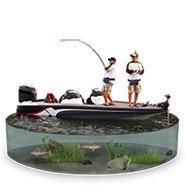
Bass Boats

Bay or Flats Boats

Bowriders

Cabin Cruisers
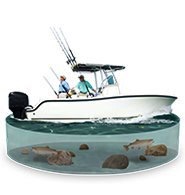
Center Consoles
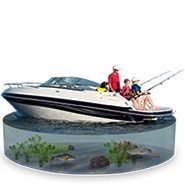
Cuddy Cabins

前甲板游艇
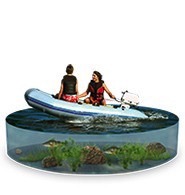
Dinghies

Fish & Ski

High Performance Boats

Inboard Ski / Wakeboard Boats

Inflatables

Jet Boats

Motor Yacht/Cruisers

Multi-Hull Power Boats

Personal Watercrafts

Pontoon Boats

Sailboats
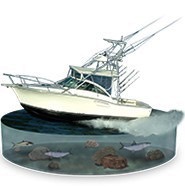
Sportfishing Boats

Trawlers

Walkarounds

